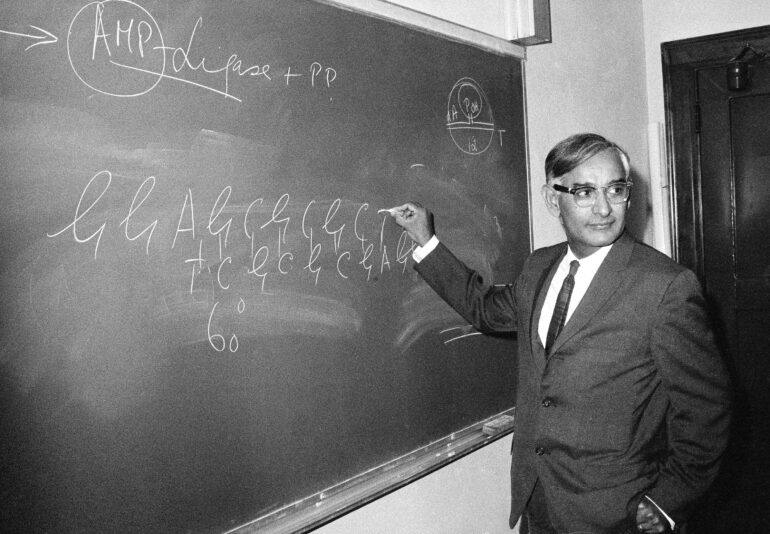2022 marks the 100th birthday of Nobel Prize winning chemist Har Gobind Khorana – or so we think. The exact date of his birth is not known, because Khorana was born in poverty in a British Indian class that rarely recorded such dates. As a child, he had to beg a neighbor for a glowing ember so his mother could light their daily cooking fire. He was 6 before he owned his first pencil.
Khorana emerged from this background to receive a Nobel Prize in 1968 for deciphering the genetic code that translates DNA sequences into the protein molecules that carry out the functions of living cells.
I am writing a biography of Khorana with the hope that his story will inspire young scientists from every background to pursue their dreams of exploration and discovery.
Education and training
In spite of his family’s poverty, Khorana’s father insisted on educating his children. He taught them to read and write early. The younger Khorana’s first four years of schooling took place under a tree until his father helped establish a one-room school in their village.
Khorana attended the University of Punjab, where he obtained a Masters in Chemistry in 1945. That same year, the Indian government initiated a program that sent talented students abroad for training. Khorana belonged to the first cohort and obtained a Ph.D. in organic chemistry from the University of Liverpool in 1948.
Under his scholarship’s terms, he was due to return to India. But the previous year, Khoran had met and been captivated by Esther Silber, a Swiss woman. He opted to do a postdoctoral year in Switzerland. With no funding, he lived off his meager savings to work with Vladimir Prelog, one of the world’s leading organic chemists.
Khorana also began to read widely in German-language chemistry, which led him to become curious about a family of little-known synthetic reagents called carbodiimides that help form larger organic molecules from smaller components. One of these chemicals in particular, diccyclohexylcarbodiimide or DCC, became critical in Khorana’s future work on DNA.
In 1949, Khorana returned to India alone, but his promised government job never materialized because the newly independent country was bankrupt. He managed to obtain a fellowship at the University of Cambridge in England, which was emerging as a global center of molecular biology.
The groundbreaking work happening there included the sequencing of protein molecules into their amino acid components as well as determining their structure. Francis Crick and James Watson would untangle the double helix structure of DNA there in 1953.
Khorana began using the chemical DCC to take apart and put together amino acid components of protein molecules. DCC also allowed him to put together strings of DNA, starting with their fundamental units, nucleotides.
In 1952, Khorana was offered his own laboratory at the University of British Columbia. Esther and Khorana married and moved to Vancouver.
